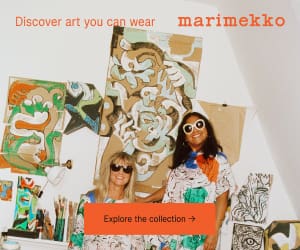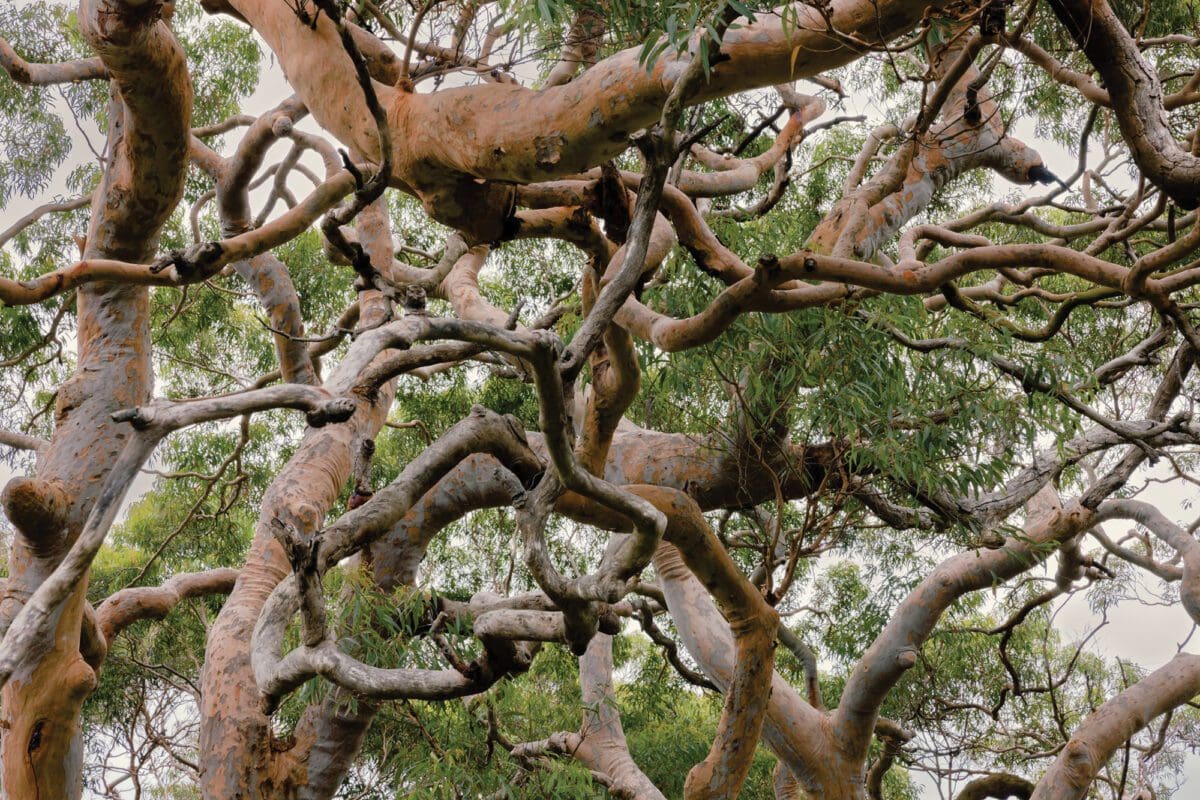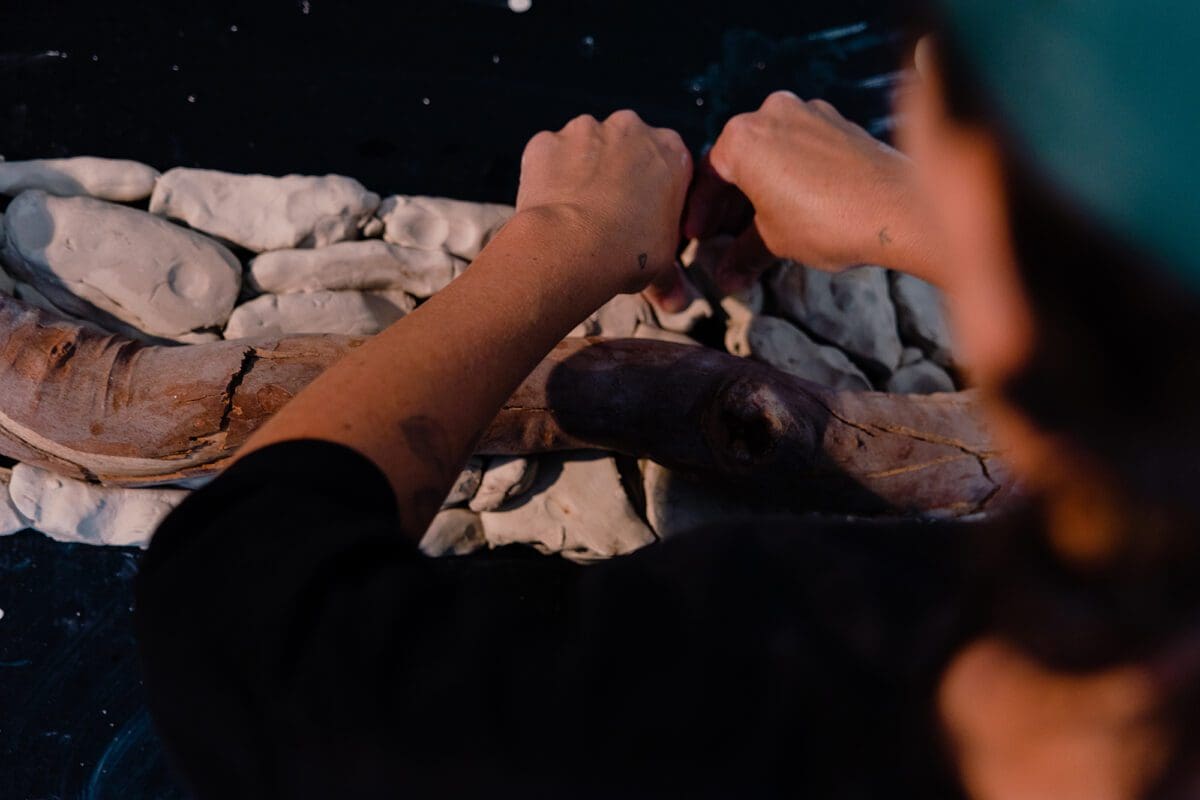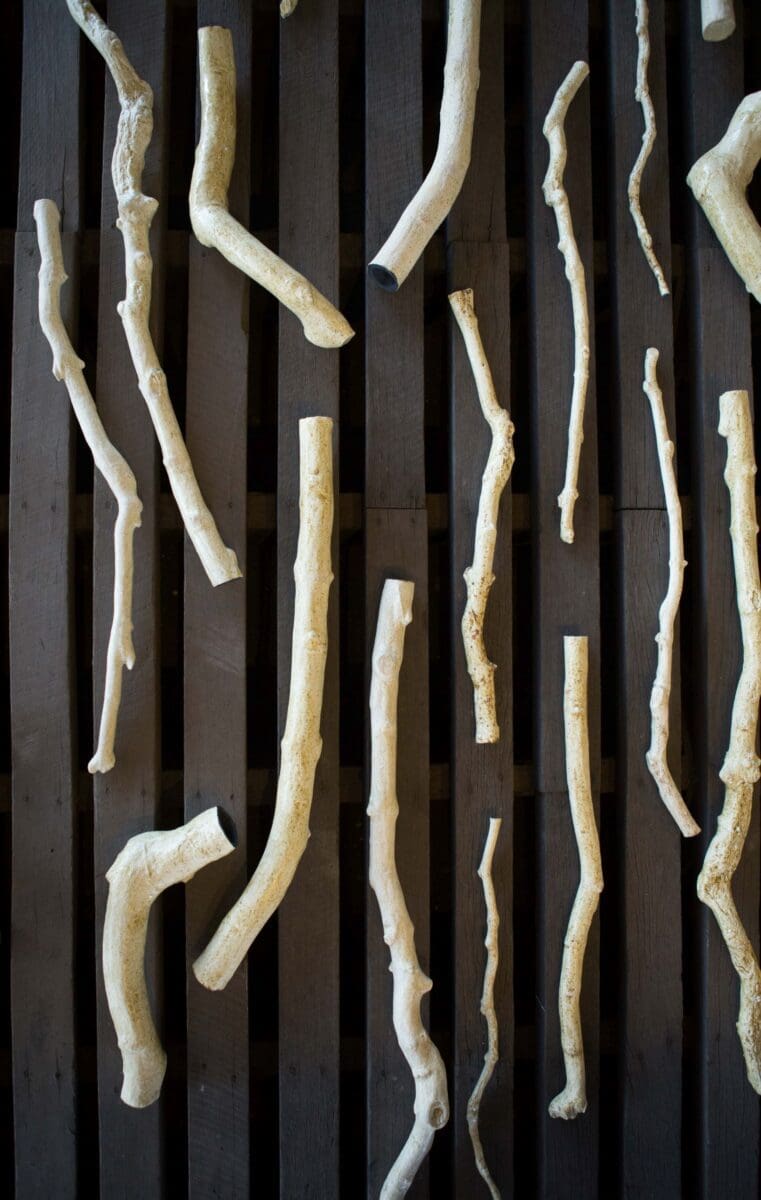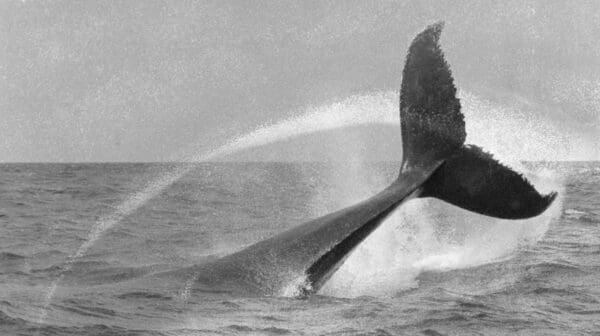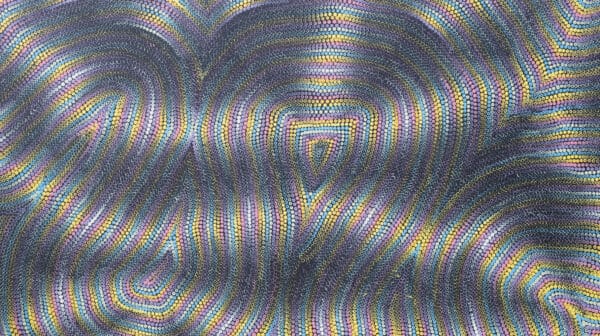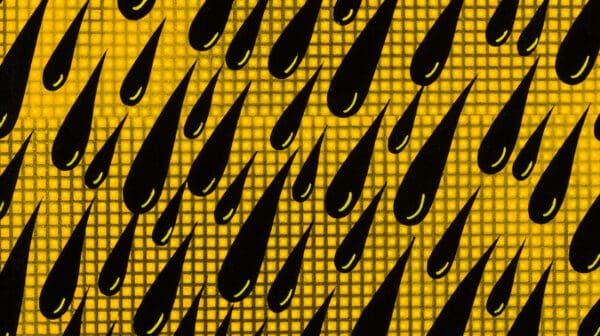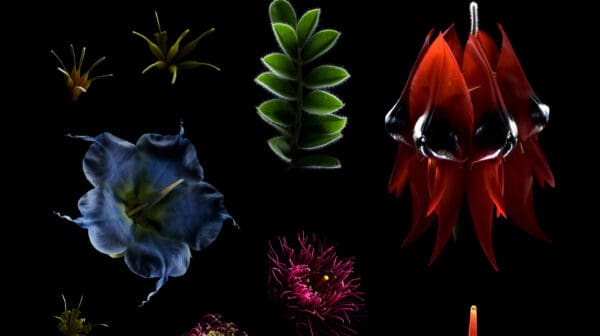Yasmin Smith examines plants as time-honoured witnesses of Country, story and people. Since 2014 she’s been building ceramic archives, casting replicas of plants in clay and glazing them with the ash of the original specimens. Since the ash is laboratory-tested to uncover the plant’s biological makeup, the resulting glaze speaks to the plant’s history. What affects this process, Smith explains, is “deep geological time” and “human intervention”.
At Mosman Art Gallery, Smith has collected Angophora costata, a native tree commonly known as the smooth-barked apple, which is grown around Booragy (Bradleys Head). It’s collected through a collaboration with Harbour Trust, a government body rehabilitating land around Sydney Harbour.
Smith also amassed wrack (washed-off kelp), collected from the local shores of Koree (Chowder Bay). The resulting research and ceramics map the saltiness of these sites and create a record of pollution. “I’m looking at how other minerals, derived from rock, wash into mangroves and the sea, and how they circulate nutrient cycles,” explains Smith.
These ceramics are paired with a 2018 body of work responding to salt in its different forms in Warrane (Sydney Cove) / Parramatta River and Wareamah (Cockatoo Island). Smith created a makeshift studio on Wareamah and evaporated saltwater to create glaze for salt harvesting vessels. Grey mangroves from further upstream were also collected via Bush Care and Canada Bay Council, resulting in a suite of abstracted ceramic forms.
These works highlight the interconnectedness of Smith’s archive, as well as our human relationship to plants. Smith doesn’t hierarchise her projects, always using the same glaze recipe and firing at the same temperature. And through these growing processes and collections, Smith is also examining institutional archives in museums and laboratory processes, where plants themselves become an archive of memory.
Yasmin Smith
Mosman Art Gallery
17 June—10 September
This article was originally published in the May/June 2023 print edition of Art Guide Australia.

